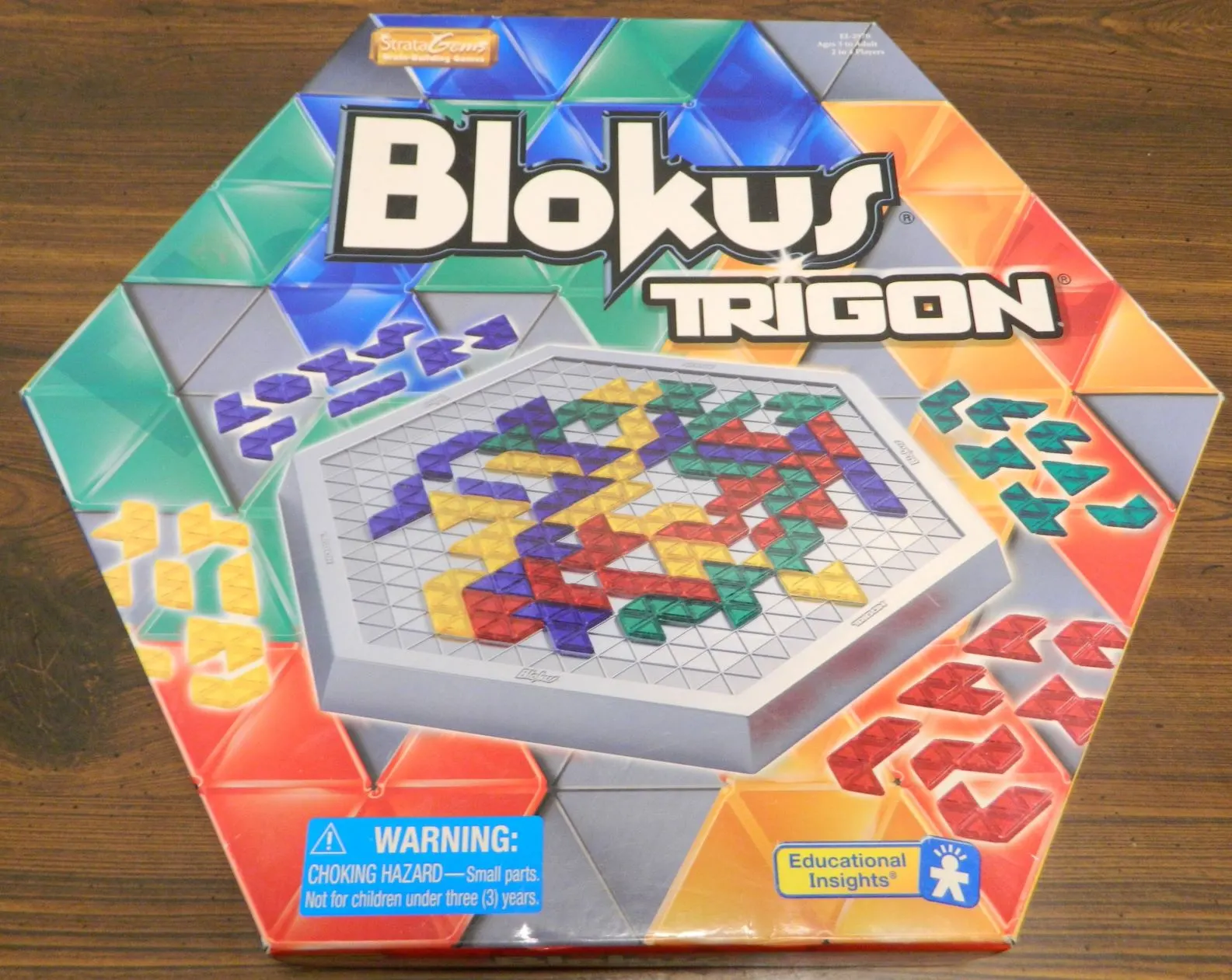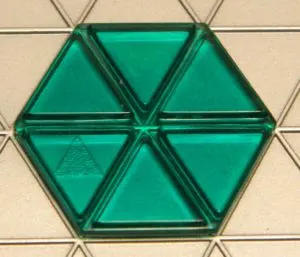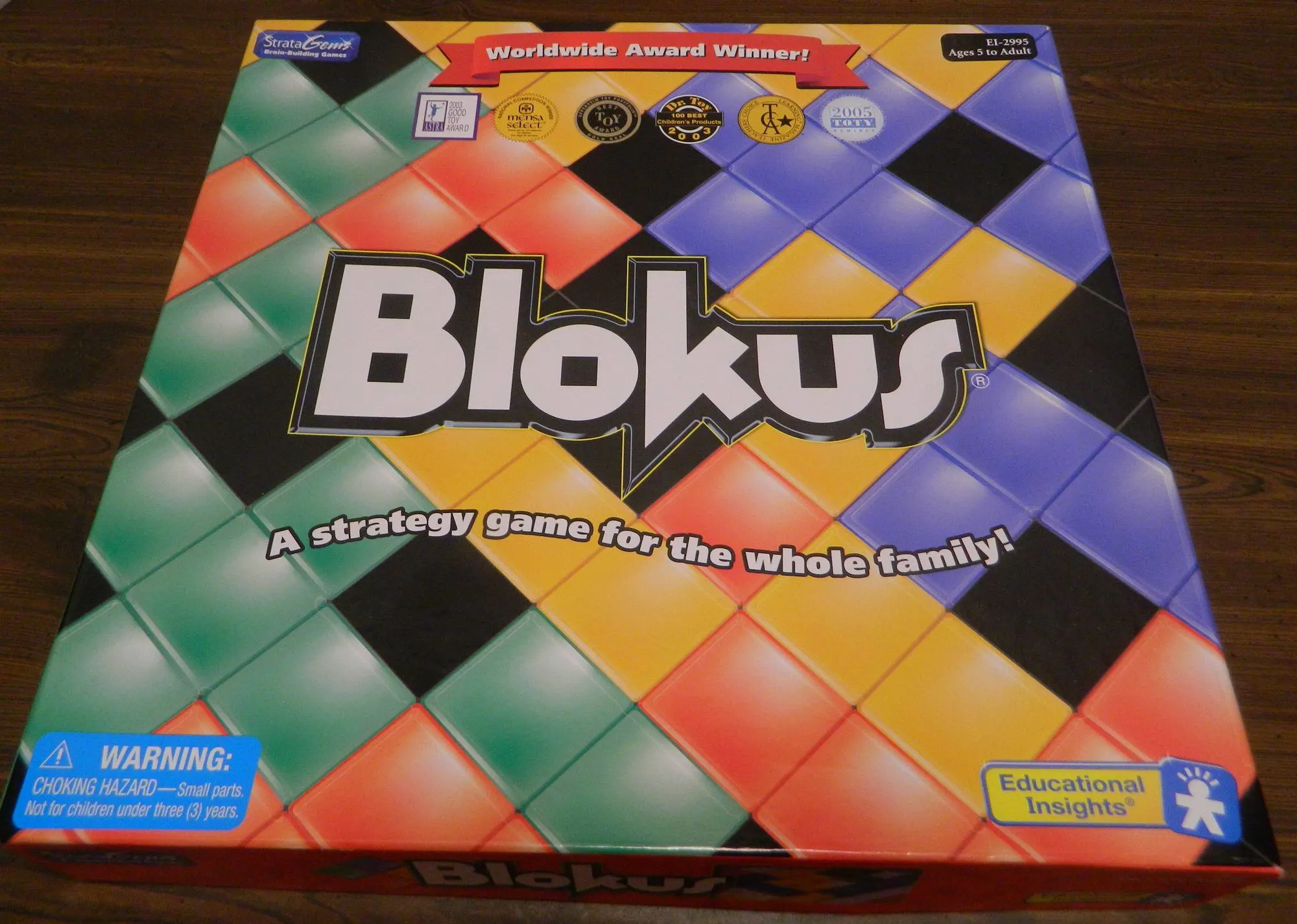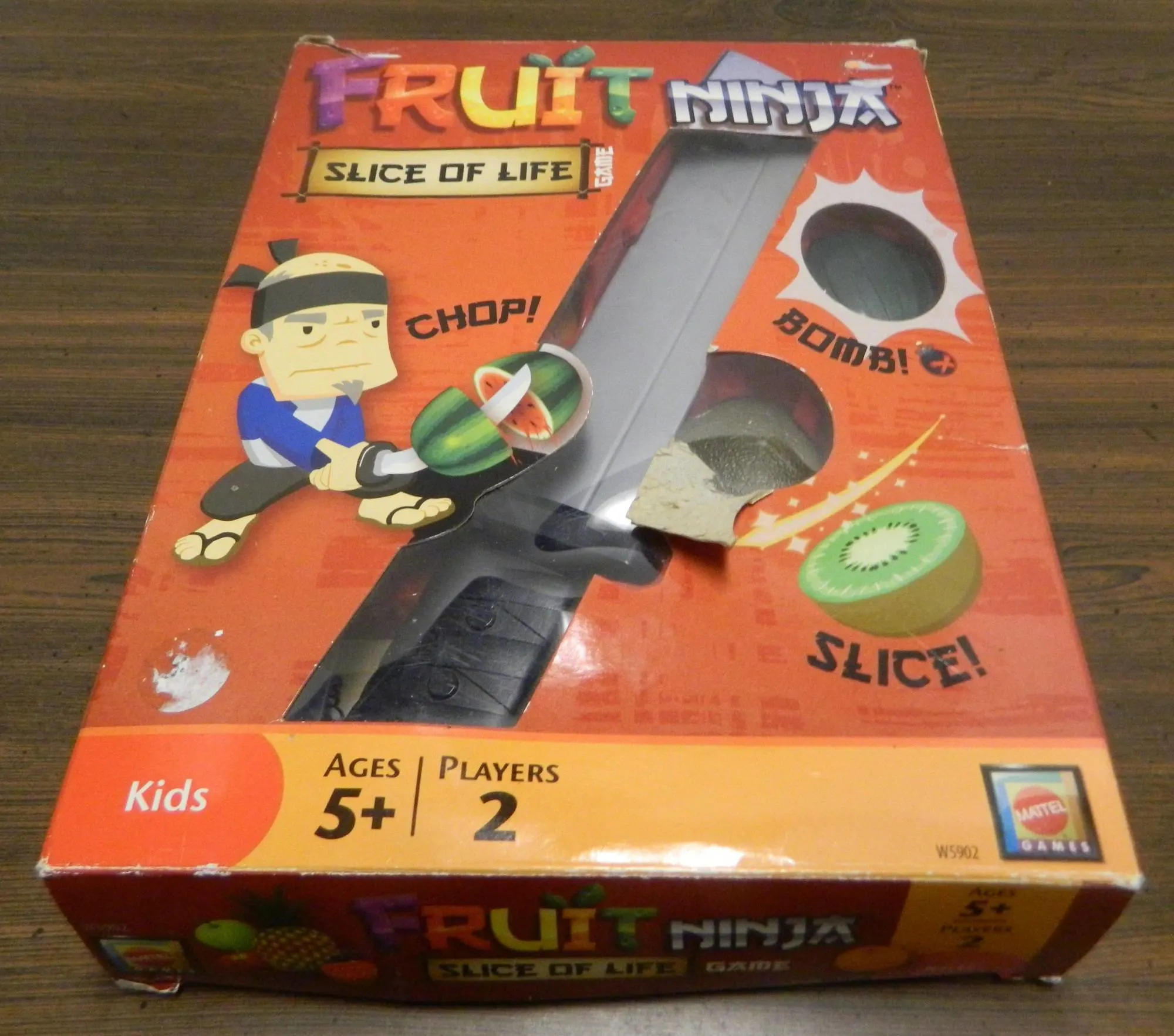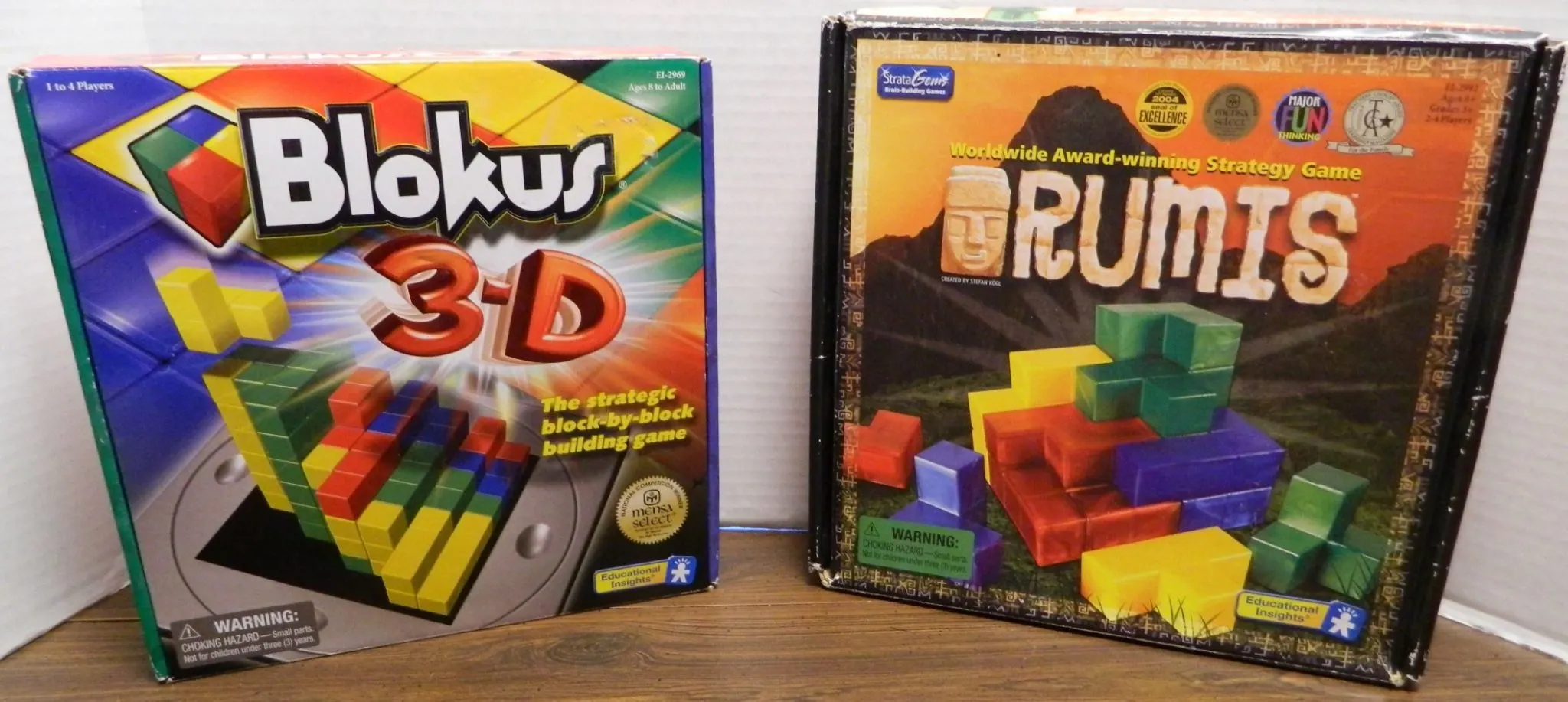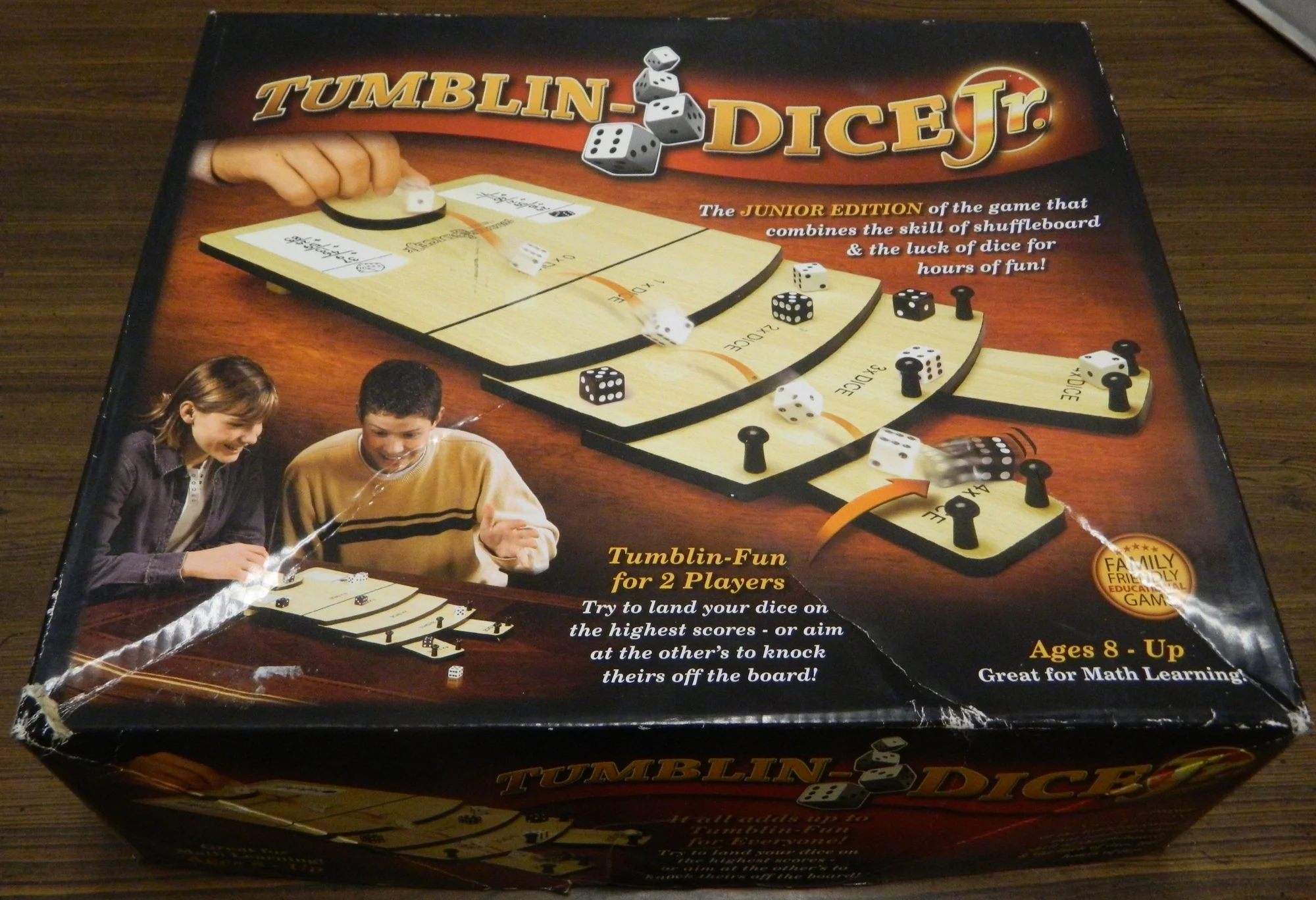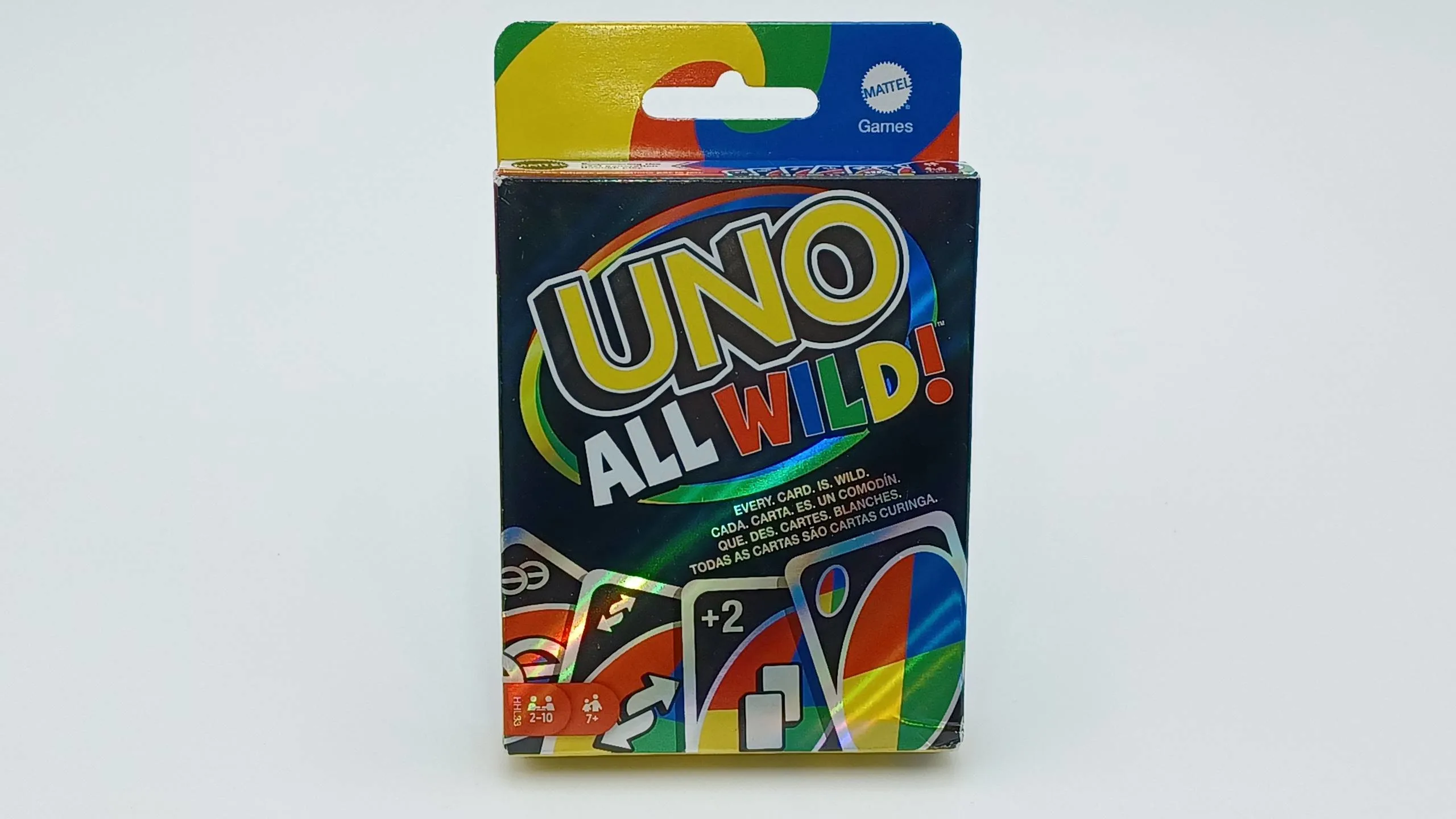Originally released back in 2000 Blokus is a game that basically became an instant hit. The game was nominated for several awards and quickly became a best seller as it is still widely published to this day. I took a look at Blokus a while back and while I enjoyed it I thought it was a little overrated. Due to its success the game has had a number of spinoff games created over the years. Today I am looking at one of those spinoffs Blokus Trigon which takes the original game and swaps the squares for triangles. Blokus Trigon doesn’t drastically differentiate itself from the original Blokus, but it maintains the simplicity and fun of the original game.
How to Play Blokus Trigon
Setup
- Place the gameboard between the players.
- Each player chooses one of the colors and takes all 22 pieces of their chosen color.
- The turn order is determined by the colors. The player who chose blue will go first. The next player is yellow, then red, and finally green.
Playing the Game
Each player will use their first turn to place their first piece on the board. They may choose any of their pieces to be the first that they will play. Each player will choose one of the starting spaces indicated by a triangle and place their first piece on the space. They will place the piece so it fits into the grooves in the board.
After each player has placed their first piece players will continue to play pieces to the board. On their turn each player can choose any of their pieces that they haven’t placed yet. When playing a piece it can be placed anywhere as long as it fits into the grooves and it touches one of the player’s previously played pieces. The catch is that pieces can only touch at a corner. A player can place a piece where the corner of one piece touches the corner of one of their other pieces. They can also place a piece where a corner of one piece touches an edge of another piece. You may not place a piece where the edge of one piece touches the edge of another piece. Once a piece has been validly placed it cannot be moved for the rest of the game.
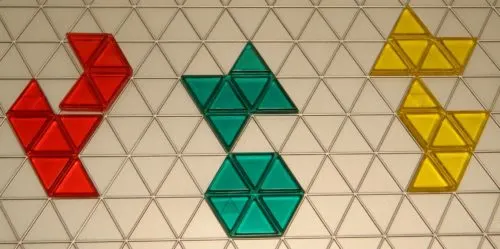
The second red piece has been placed incorrectly as the two pieces share a side. The green pieces have been played correctly as the corner of one piece touches the corner of another piece. The yellow pieces have also been placed correctly as the corner of one piece touches the edge of another piece.
These above rules do not apply to pieces of different colors. Multiple pieces of different colors can be played where the edge of one piece touches the edge of a piece of a different color.
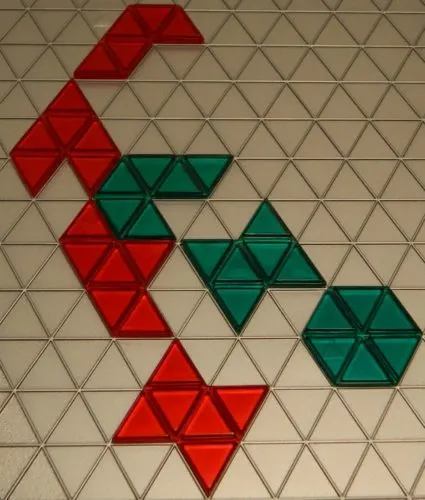
One of the red pieces share an edge with a green piece. This is allowed because they are different colors.
If a player can play a piece they are forced to play a piece on their turn. Play will then pass to the next player in turn order.
End of Game
When a player has no more valid plays or no tiles left they will skip the rest of their turns. The rest of the players will continue placing tiles until they can no longer place any of their tiles. When none of the players have any more valid moves left the game ends.
Players will then tally up their scores. If a player was able to place all of their tiles on the board they will score +15 points. In addition if the last tile they played was the one triangle piece they will score an additional five points. If a player is unable to place all of their tiles they will lose one point for each triangle section of each of their pieces that they weren’t able to play.
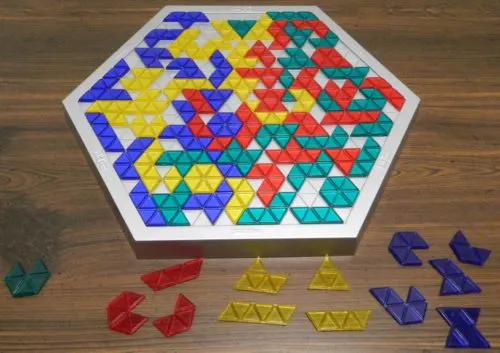
The green player has played all of their pieces except for one. The piece consists of five triangles so the green player will score negative five points. The red player will score negative fourteen points. The yellow player will score negative 20 points. The blue player will score negative 26 points. The green player scored the most points so they won the game.
The player who scores the most points/least negative points will win the game.
Variant Rules
Here are a number of variant rules you can implement to change up the gameplay.
Corner to Corner: To make the game more challenging you can remove the rule where you can place pieces where the corner of one piece touches the edge of another piece. With this rule you can only place pieces where the corner(s) of one piece touch the corner(s) of another piece.
Three Players: To make the game more competitive for three players prohibit players from playing pieces onto the spaces on the outer ring (noted by a slightly different color). Players should also leave one starting space between each player’s starting location.
Two Players: One player will control the blue and red pieces while the other player controls the yellow and green pieces. When choosing your two starting spaces your two pieces must be on the opposite sides of the board. Players will follow the same turn order as the normal game. At the end of the game each player’s score will be equal to the total of both of their colors.
Teams: One team will control the blue and red pieces while the other team controls the yellow and green pieces. Turn order will stay the same as the normal game. At the end of the game the team with the most points combined wins the game.
Solitaire: In the solitaire game the player will play as all four colors. They will take turns with each color like in the normal game. The objective is to try and get as many pieces on the board as possible.
My Thoughts on Blokus Trigon
In a lot of ways Blokus Trigon is exactly what I expected it to be. Basically the game took the original gameplay and swapped the square pieces from the original and changed them into triangles in Blokus Trigon. Outside of one small change the gameplay is exactly the same. The objective of the game is still to try to play as many of your pieces as you can to the board. You may initially expect to try to place your pieces next to one another like Tetris and other similar games. The catch is that instead of placing pieces right next to one another you need to place them where the pieces touch at the corners. As other players share the board with you the goal is to find ways to move around their pieces in order to extend the areas where you can place pieces.
I think one of the main reasons that the original Blokus became so popular was because it was simple and to the point. The game doesn’t waste players time with unnecessary mechanics. Players just take turns placing pieces following the simple rule that two pieces of the same color cannot share a side. That is basically all there is to the game. Therefore the game can be taught to players in just a few minutes. If the players are already familiar with Blokus it may only take a minute to explain the differences with Blokus Trigon. With this simplicity it is no surprise that the game works well with the whole family. The game has a recommended of 5+ and that doesn’t seem too far off. Kids that young may not understand the strategy behind the game, but they shouldn’t be confused by the mechanics.
With such simple gameplay mechanics I will say that the game has considerably more strategy and skill than you would initially expect. Outside of hoping the other players make mistakes and ignore you to target other players, there isn’t much reliance on luck in the game. The best player is likely going to win most of the time. There is genuine skill in the game as it requires you to do a good job planning out how you want to place your pieces and figuring out how to work around the other players’ pieces. The basic strategy in the game is to spread out early in the game as this gives you more opportunities to expand your territory later in the game. You also will likely want to play your largest and most awkward pieces early as they become considerably more difficult to play later in the game. Other than these two tips Blokus Trigon is the type of game that you learn the more you play it. The more you play it the better you should get at the game.
Despite relying on quite a bit of strategy the overall game plays pretty quickly. If players suffer from analysis paralysis where they have to always find the best play the game may become a little long. Players need to be willing to accept a non-perfect play as it otherwise could take a long time analyzing all of the different possible plays for a turn. If players limit how much time they have to think through their options the game can play pretty quickly. Once everyone gets familiar with the game I would expect most games to only take around 20-30 minutes.
As the gameplay is pretty much the same as the original Blokus unfortunately Blokus Trigon suffers from the same main problem. While you have a lot of control over your own fate in the game, the one thing that can mess with that fact is the possibility of the other players ganging up on you. One of the keys to the game is spreading out quickly in order to take over more territory giving you more options on future turns. This is key to your success in the game, but how successful you are with it kind of depends on what the other players decide to do. If two or more of the players decide to gang up on one player it is very hard to escape. Some clever plays may allow you to sneak past the other players, but you are much more likely to be cutoff where you will have limited space to build. This will lead to your game ending pretty quickly. If players work together to try and get rid of you they will likely succeed.
At this point I have basically been talking about Blokus and Blokus Trigon interchangeably. It makes sense as the two games are very similar. The main difference between the two games is that one uses square pieces while the other uses triangles. As the two games are very similar your opinion of one is very likely to transfer to the other game. Those who hate Blokus are unlikely to find anything in Blokus Trigon to change their opinion. Those who really like Blokus though will likely really enjoy Blokus Trigon as well. As I mentioned earlier I like the Blokus series as it does a good job blending simple gameplay with a surprising amount of strategy. I am not exactly sure why, but I have always felt the game was a little overrated though.
While the two games are very similar there is one main difference. The main difference comes from the fact that the pieces are based on triangles instead of squares. This leads to the game having more unique types of pieces than the original Blokus. This changes up the strategy some as there are different ways of placing the pieces on the board. Switching from squares to triangles doesn’t drastically change the gameplay, but it does take a little time to adjust to the new types of pieces. I can see some people preferring the triangles to the squares, while other players probably won’t like the change.
The biggest change that the triangles have on the game though has to deal with the fact that it opens up new opportunities for the gameplay. In the original Blokus you are only allowed to connect pieces together by having them touch at the corners. This was kind of mandatory based on the shape of the pieces and the gameboard. By swapping to a triangle though you are given another option for playing pieces. Instead of just playing corner to corner you can also play corner to side. This might not seem like much at first, but it actually has a pretty big impact on the gameplay. By allowing players to connect corner to side you open up considerably more play opportunities.
I think some players will really enjoy this change while others won’t like it as much. On the positive side it seems to add more strategy to the game. With more placement opportunities it makes it easier to snake around the other players’ pieces. The other players could think that they have trapped you, and then you find a play that allows you to reach another part of the board. This gives you more flexibility in the game as a smart play of your pieces will give you more options allowing you to place more pieces on the board. For the most part this seems to help the game as I like when games give you more choices. I didn’t test this myself, but Blokus Trigon is also supposedly better balanced for three player games.
On the other hand allowing players to play corners against edges does take away some of the strategy of blocking other players in. Since it is easier to find ways to squeeze into other parts of the board this makes it much harder to trap other players. Blokus players whose strategy revolves around blocking other players probably won’t like this change. The good news is that if this ever becomes an issue you can always choose to use the alternative rule where you can only play pieces that connect at the corners. This will make the game considerably more challenging so if you want a challenge I would consider giving it a shot.
As for the components Blokus Trigon is basically the same as the original Blokus. The pieces are made of what feels like exactly the same material with the only difference being that the game utilizes different shapes. Like the original game I liked the semi-transparent playing pieces as they look good on the board and are durable. Along with the gameboard the pieces fit well into the grooves so you know that the pieces are in a correct position. The components may not wow you, but they do everything that you could need for the gameplay.
Should You Buy Blokus Trigon?
As a spinoff game Blokus Trigon owes a lot to the original Blokus. The main gameplay is exactly the same as the original game. The objective is still to place as many of your pieces on the board as possible while making sure not to have any sides of two pieces of the same color touch one another. The game is quite simple where it can be explained in minutes and the whole family can enjoy it. Under the surface there is quite a bit of strategy to the game though. You need to visualize and plan out how to place your pieces. There is some luck as players can gang up on you, but the best player will usually win as it is the type of game that you get better at the more you play it. As for the differences it all comes down to swapping out the square pieces for triangle pieces. This allows you to have one piece’s corner touch another piece’s side. This gives you more placement opportunities which makes it easier for players to move around the board.
As the two games share a lot in common your opinion of the original game will likely be the same as your opinion of Blokus Trigon. If you never cared for the original Blokus I don’t see that changing in Blokus Trigon. Fans of the original game should enjoy Blokus Trigon though. Whether you will think it is better or worse will probably come down to personal preference as some people will like one game more than the other. In either case I would recommend picking up Blokus Trigon if you think the premise sounds interesting or you really enjoy the original Blokus.

